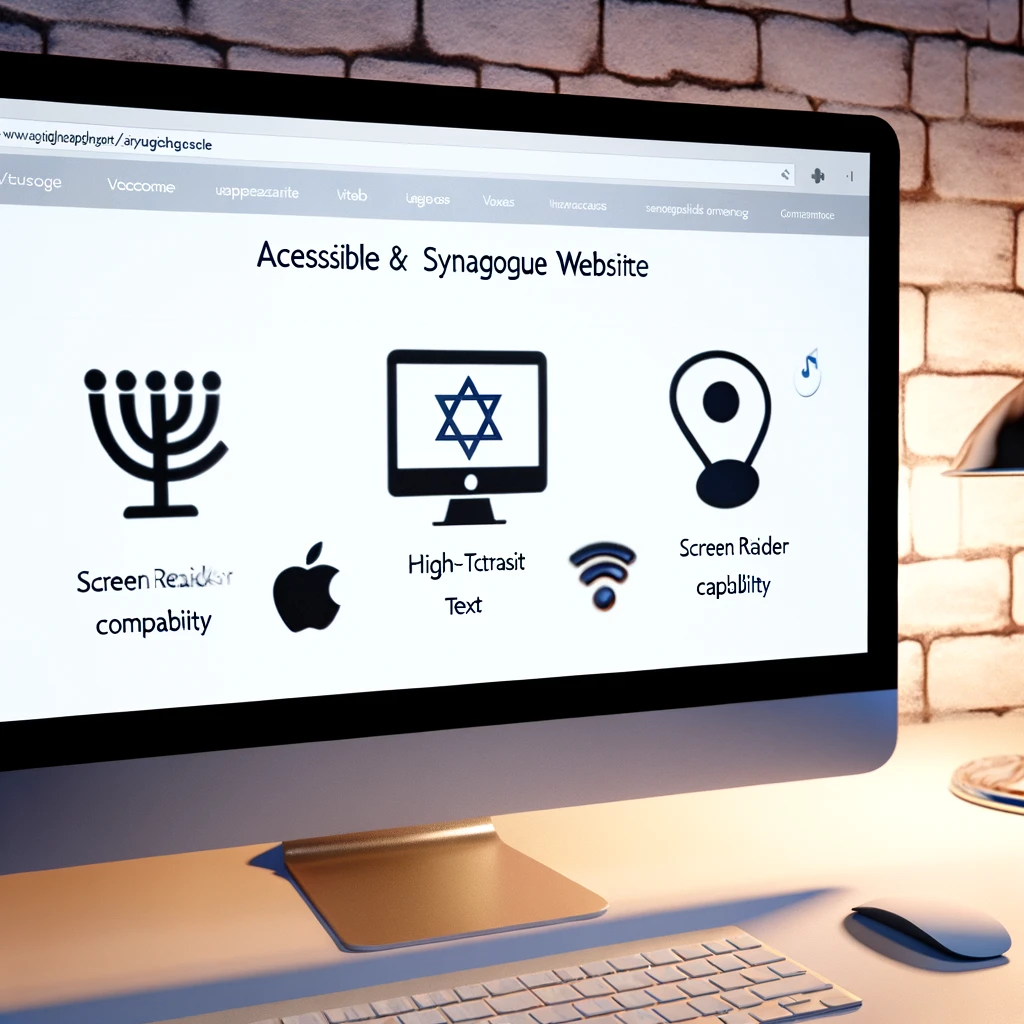
In today’s digital-first world, a synagogue’s website serves as a central hub for community engagement, education, and information. Ensuring this digital gateway is accessible to all, including individuals with disabilities, is not just a matter of legal compliance but a reflection of Jewish values of inclusivity and kindness. This post outlines best practices for creating an inclusive synagogue website that welcomes everyone.
Web accessibility means designing and developing websites, tools, and technologies so that people with disabilities can use them. Accessibility issues can affect a wide range of users, including those with visual, auditory, motor, and cognitive impairments. Addressing these needs ensures everyone can access content, navigate successfully, and engage with online synagogue resources.
Ensure all images on your website have alt text that describes the image’s content or function. Links should also be descriptive; avoid vague phrases like “click here,” and instead, use meaningful text that indicates the link’s destination or purpose.
Choose fonts and colors that ensure high contrast and readability. Text should be resizable up to 200% without loss of content or functionality, allowing users with visual impairments to read comfortably.
Your website should be fully navigable using a keyboard alone, allowing users who cannot use a mouse to access all features. This includes being able to access all links, buttons, forms, and other interactive elements.
Offer transcripts for audio content and captions for videos, ensuring users who are deaf or hard of hearing can access multimedia content. This practice also benefits users who prefer reading to listening or watching.
Use automated tools and conduct user testing with individuals who have disabilities to identify and address accessibility issues. Regular reviews are essential as your website evolves.
Creating an accessible website is a step toward broader digital inclusion, reflecting a commitment to ensuring every community member can participate fully in synagogue life. By adopting these practices, synagogues not only enhance their digital presence but also embody the inclusive spirit central to Jewish values.
Embracing web accessibility demonstrates a synagogue’s dedication to welcoming all individuals, reinforcing the importance of community and mutual support. As we continue to navigate an increasingly digital world, let’s commit to making our online spaces open and accessible to everyone.
For more tips on enhancing your synagogue’s digital engagement and accessibility, visit our blog for insights and guidance.